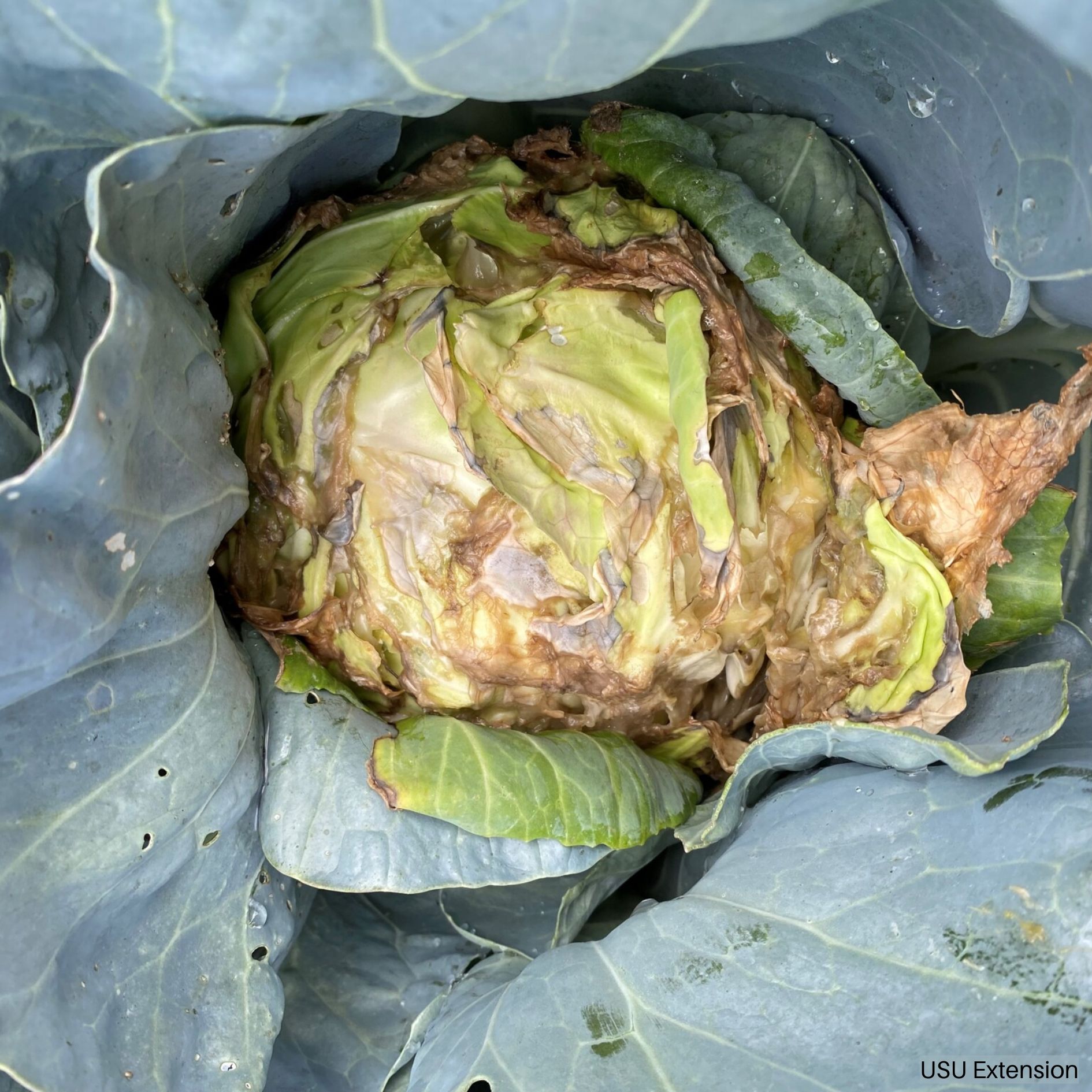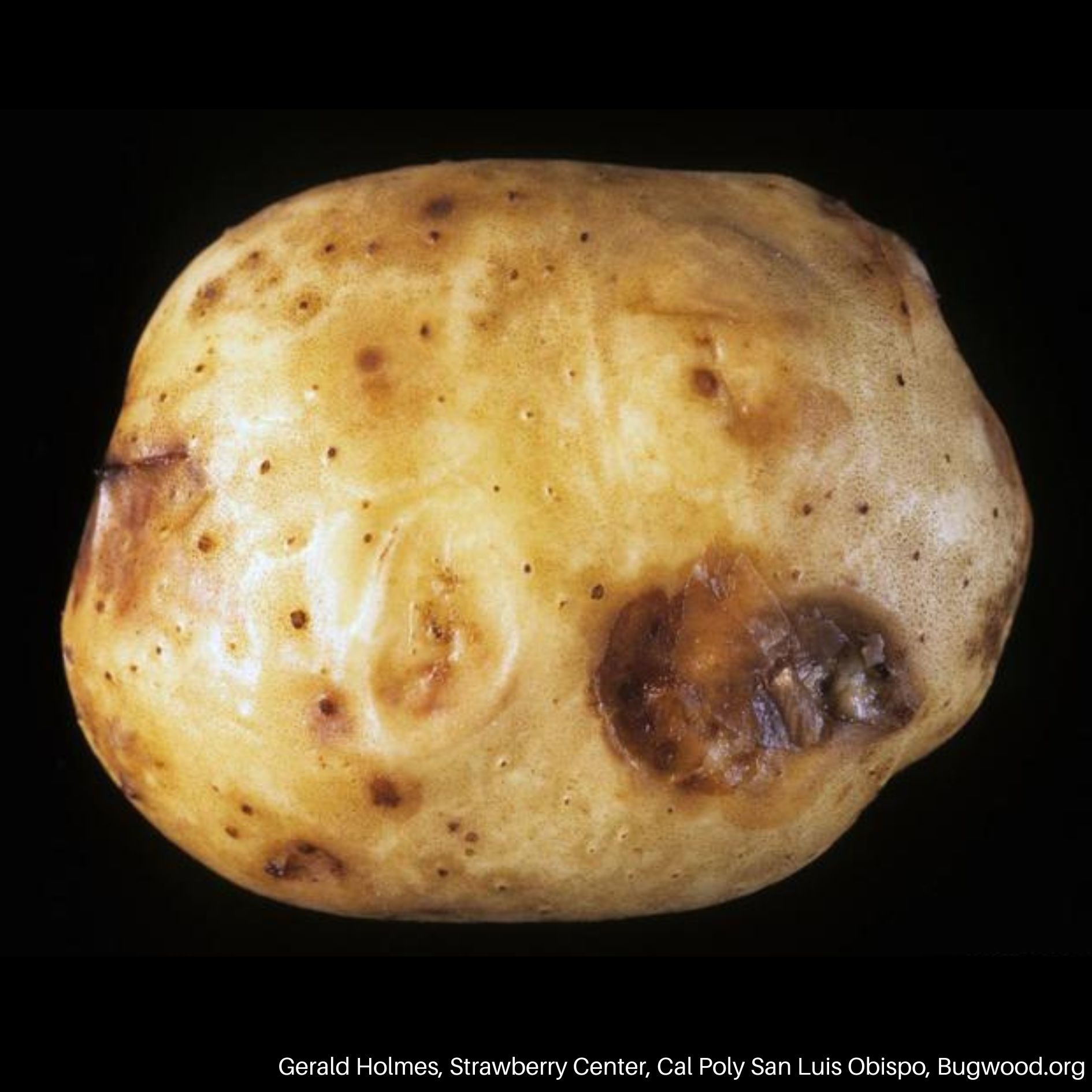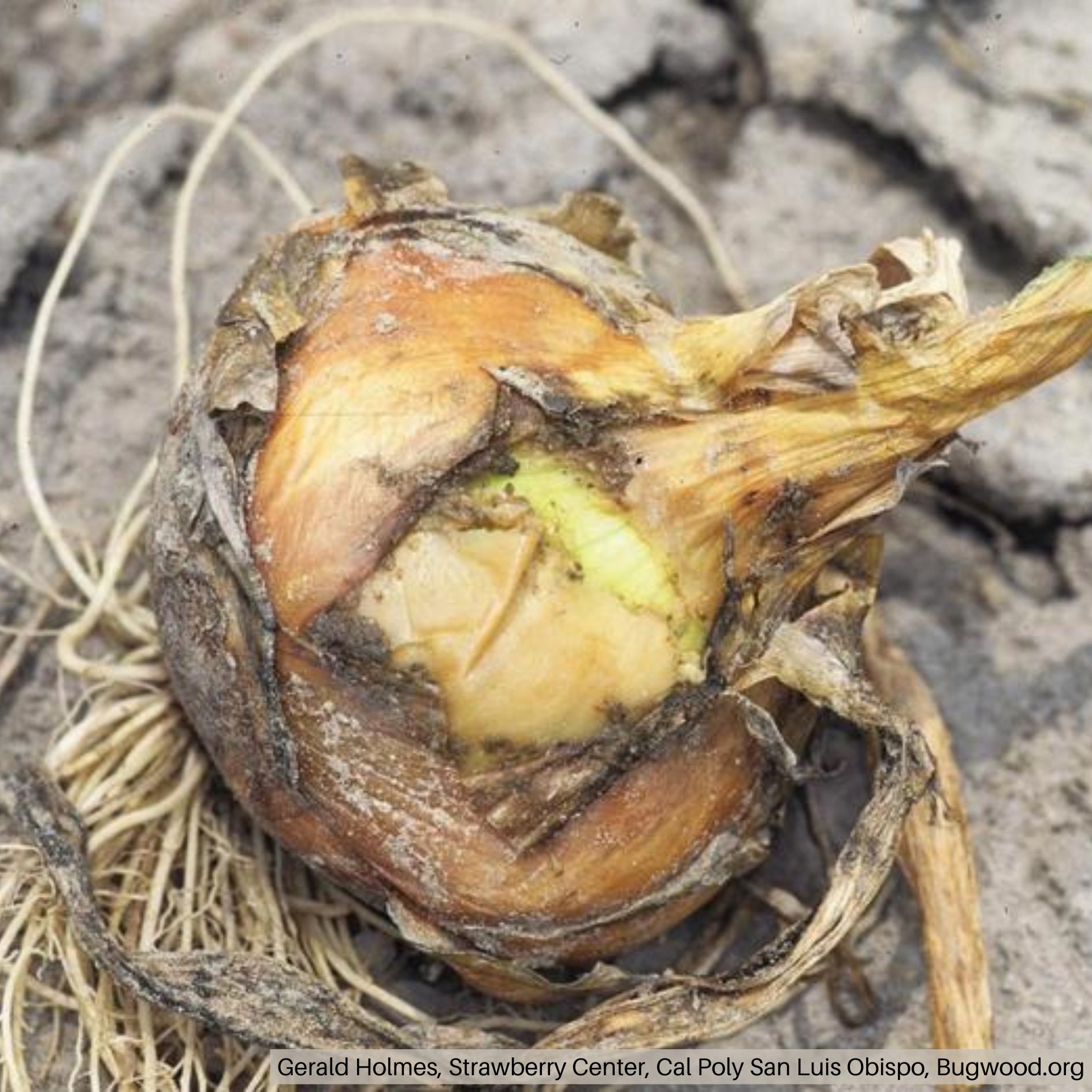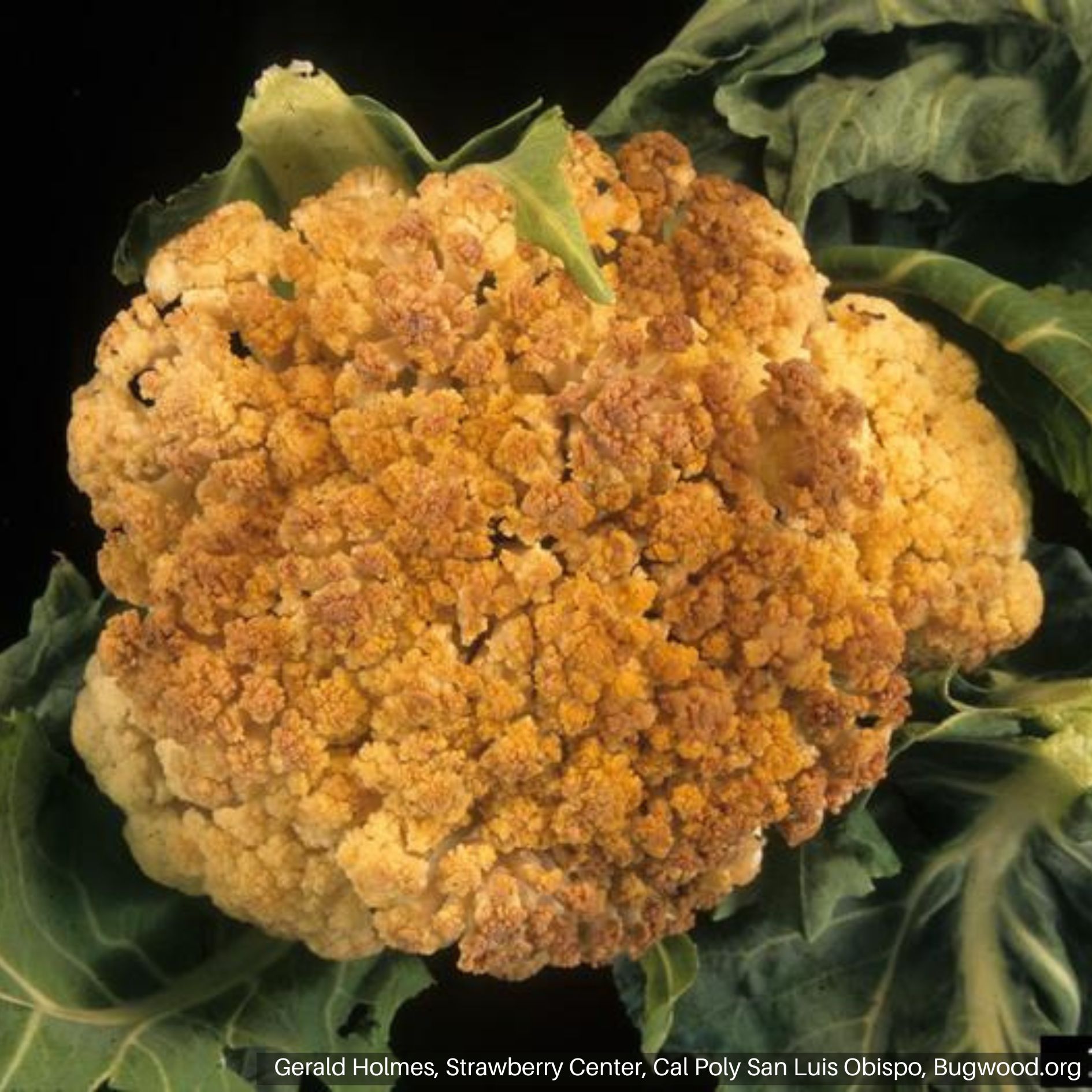Bacterial Soft Rot
HOSTS
- Carrots
- Brassicas
- Cucurbits
- Onions
- Potato
DESCRIPTION
Bacterial soft rot can be caused by multiple species of bacteria, including Pectobacterium carotovorum and Dickeya dadantii. Infection is most common when conditions are wet and warm.BIOLOGY
The source of bacterial soft rot infections is often the use of an infected seed or contaminated plant matter in the soil. In wet conditions, the bacteria will be spread through water movement to new hosts. The use of contaminated tools and equipment can also spread the pathogen. Some bacteria soft rots can spread and damage harvested crops when in storage.
The bacteria will invade the host plant through wounds or natural openings, such as stem ends. The bacteria will then break down the plant’s structural molecules, causing the plant tissue to collapse and rot.
SYMPTOMS
- Soft, water-soaked lesions.
- Mushy, discolored tissue.
- Foul-smelling tissue or liquid secreted from cracks or other openings.
- Broccoli and cauliflower heads become brown and sunken.
GENERAL MANAGEMENT
- Use certified disease-free seeds.
- Avoid watering practices, such as overhead irrigation, that result in wet soil and plants for prolonged periods.
- Ensure soil is well-draining.
- Sanitize tools and equipment used when harvesting and moving from plant to plant.
- Remove infected plants, plant debris, and cull piles.
- Properly cure and store crops after harvest.
Precautionary Statement: Utah State University and its employees are not responsible for the use, misuse, or damage caused by application or misapplication of products or information mentioned in this document. All pesticides are labeled with ingredients, instructions, and risks, and not all are registered for edible crops. “Restricted use” pesticides may only be applied by a licensed applicator. The pesticide applicator is legally responsible for proper use. USU makes no endorsement of the products listed in this publication.





